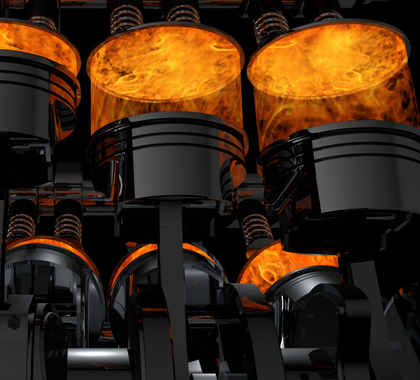Given the media coverage of Tesla, the Chevy Bolt and the Nissan Leaf, one might think electric vehicles are a recent invention. In fact, they have been around for more than a century.
In the late 19th and early 20th centuries, battery-operated automobiles and light trucks were quite common. In fact, by 1900 electric cars accounted for one-third of all vehicles on the road and New York City’s taxi fleet consisted of several hundred such vehicles.
But the introduction of the mass-produced, gasoline-powered Model T Ford in 1908 dealt a death blow to electric vehicles. By 1912, a gasoline car could be purchased for $650 while the average electric roadster sold for $1,750.
- Unlimited Digital Access for as little as $0.99.
- Read more articles like this by subscribing to the Houston Chronicle
The invention of the automobile starter that eliminated the need for hand-cranking also made gas-powered vehicles more attractive. At the same time, the huge increase in Texas oil production reduced the price of gasoline, making both car ownership and maintenance more affordable to the average consumer.
Now in the 21st century, pure electric and hybrid vehicles are making a comeback, partly due to their perceived environmental bonafides and partly because of sizable tax incentives. Nearly every major automobile company on the planet now produces, or is planning to , electric vehicles.
At the end of 2018, about 5 million electric vehicles were in service worldwide, with 760,000 traveling on America’s streets and highways. Almost half the world’s EV fleet is in China. Still, electric vehicles currently constitute a miniscule share (less than one-half of one percent) of a global car fleet of approximately 1.2 billion. By 2040, 160 million EVs are projected to be in service worldwide, representing about 8 percent of a global car fleet of 2 billion.
In short, the internal combustion engine will continue to power the lion’s share of personal vehicles for the near future. Given that reality, we should pay more attention to reducing greenhouse gas emissions related to crude oil and gasoline production while continuing to improve fuel economy in cars and light trucks, including the SUVs and crossover vehicles that are increasingly preferred by American consumers.
Oil and natural gas producers have already made significant strides in reducing methane emissions from well sites. Though both oil and gas production have doubled over the past decade, methane releases at well sites are lower today than they were 20 years ago. What is more, the Oil and Gas Climate Initiative, an industry group that includes ExxonMobil, Shell and BP among its members, is committed to reducing methane emissions by another 35 percent by 2025.
The oil and gas transmission industry has reduced the number of pipeline leaks by 94 percent in the past 30 years, preventing 122 million metric tons of carbon dioxide-equivalent emissions. These prevented emissions are equivalent to removing more than 25 million passenger vehicles from the road for one year. America’s refineries are also committed to reducing both CO2 and methane emissions in the years ahead.
The passenger vehicle is disproportionately blamed for contributing to greenhouse gas emissions. In fact, the manufacture and operation of personal vehicles accounts for only 10 percent of all GHGs in the U.S. (Heavy transportation vehicles, including marine and air, account for another 15 percent). Nonetheless, both American and foreign car manufacturers are continuing to focus on improving fuel economy, the most effective way to reduce tailpipe emissions. Just since 2010, the average fuel economy for all U.S. cars, including SUVs and light trucks, has increased from 22.6 to 25.2 miles per gallon. The use of cleaner-burning fuels is also reducing the carbon footprint of passenger vehicles.
Electric vehicles may have a smaller carbon footprint than gasoline-powered passenger cars. However, because of their small numbers now and in the near future, their impact on greenhouse gas reductions will be minimal. By contrast, improvements in conventional cars, and the fuels that run them, will do much more to improve air quality.
[Originally Published at the Houston Chronicle]





